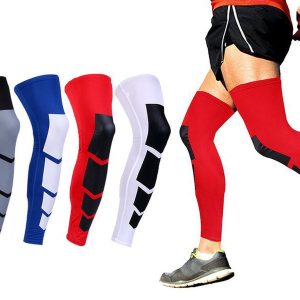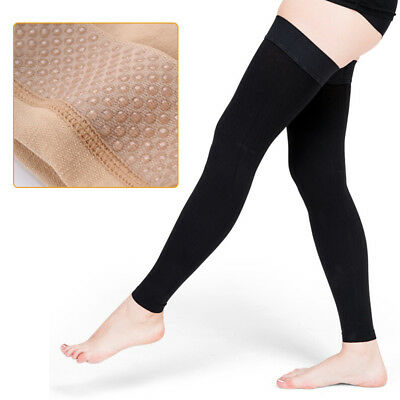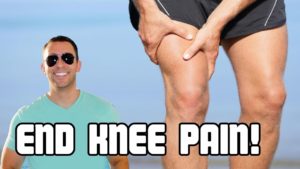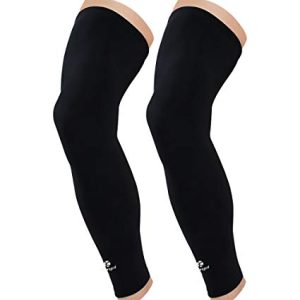Leg compression sleeves and calf compression sleeves are incredibly popular with runners, and you wonder why. This guide will go over the benefits of these sleeves for both athletes and non-athletes.
It will also discuss the different types of compression sleeves available and ways to ensure you purchase a quality product.
What is a Leg Compression Sleeve?

A leg compression sleeve uses graduated pressure to aid in easing discomfort and pain. They are an effective treatment for restless leg syndrome, shin splints, leg cramps, plantar fasciitis, and DVT, among other conditions. Compression gear can also be worn during exercise to reduce the risk of muscle damage and injury.

Many people use compression therapy every day. They find that a quality sock can make a huge difference.

Moreover, compression sleeves reduce the impact on your legs by holding tendons and muscles in place while you run and protects your kneecap (or patella). They also enhance circulation, which in turn helps the body to heal more quickly after your more intense workouts. Runners who are susceptible to shin splits appreciate that these sleeves can help prevent and treat this all-too-common problem.
Although compression sleeves for the arms are also available (which can protect your elbow, for example), this guide will mainly focus on the sleeves for the legs. Note, too, that there are even whole-body compression sleeves!

Differentiating Compression Socks vs. Compression Sleeves
Compression sleeves are very similar to compression socks. Both improve circulation in the legs which can decrease pain and swelling. The main difference between the two is that the former does not cover the toes and feet. They are designed to be more like a tight leg warmer than a sock.
While compression socks are great for people recovering from surgery and suffering from severe circulatory disease, compression sleeves are great for athletes and people with milder leg pain. These are some of the reasons people might choose compression sleeves over compression socks.
Ease of Use
Unfortunately, compression socks can be difficult to put on and take off. Many people find it easier to apply and remove the sleeves since they don’t have to ensure a proper fit over the foot. This is especially convenient if you need to change your gear frequently.
Great for Any Weather
Summer Weather and Compression Sleeves
Many people don’t like wearing compression socks in hot weather because their feet can’t breathe — one reason why many people prefer sleeves in the summer. They can provide much-needed support for the leg and ankle without being too hot or too bulky.
Winter Weather and Compression Sleeves
However, sleeves are also perfect for winter because they fit under your clothing easily. It’s relatively simple to layer them under a pair of wool socks or cozy leggings.
Style
If you want to show off, they are also available in a wide variety of colors and styles. Brighter and flashier shades keep runners safe by gaining more visibility and standing while out on the road. Alternatively, if you play a team sport, you can choose the ones that best match your team’s uniform.
Other Popular Articles on ComproGear
Rose Toy The Rose Vibration Review
Easy to Add to Lifestyle
Compression sleeves are actually the ideal way to live a pain-free lifestyle for most people. They can be worn before, during, and after athletic training. They can also be worn any time you feel tightness or weakness in your leg or ankle.
When purchasing compression sleeves, keep in mind these 8 main features, which we will cover in detail below.
8 Features To Consider and How They Can Benefit You
There are 8 main features that compression sleeves may have. These 8 are:
- Anti-odor technology
- Specialized compression zones
- Levels of compression (high or low)
- Full-range compression
- Specialty sleeves just for runners
- Stability and support design
- Performance
- Fabric
These 8 features can influence your purchase so keep track of any that might be beneficial to you in your health journey.
1. Anti-Odor Technology

Smelly socks are the result of excess bacteria growth. They can be unhygienic, uncomfortable, and unattractive. Fortunately, some sleeves now come with anti-odor technology and prevent stinky bacteria from multiplying, leaving both your socks and legs feeling fresh. These sleeves are perfect for athletes and anyone who suffers from foot odor.
None of the benefits of compression gear are sacrificed when anti-odor technology is added. These sleeves still feature high-quality compression. The only downside is that, since this is a newer technology, they tend to be costly. For the same reason, there is also a limited range of colors available.
2. Specialized Zones

There are sleeves that are designed to mimic the effects of kinesiology tape. That is, they are specifically made to heal and protect runners’ calves. These sleeves are popular with athletes who are prone to shin splints and who need extra lower leg support. If that sounds like something you frequently have to deal with, then sleeves with a targeted compression zone might be right for you.
3. Low-Level vs. High-Level
The most common compression level is 20-30 mmHg. Sometimes, however, people might see more benefits with stronger pressure. Fortunately, sleeves are also available at higher compression levels. They will fit the calf tightly and offer a lot of support. Athletes wear them to help deal with more serious muscle problems, in place of, for example, a leg brace.
If you are new to wearing compression socks, you probably want to start out with a lower level of compression. If you find you need more pressure, talk to your doctor. He or she will be able to tell you if a stronger level is right for you.
In addition, make sure you have especially accurate sizing when wearing tighter socks.
4. Full-Range Compression (great during workouts!)

Most sleeves are graduated. This means that they offer the strongest compression at the ankle and the lightest compression at the knee or top of the sleeve. They are designed to be durable, and they might aid with your workouts. Many runners say that this type of compression gear enhances their stamina and muscle strength while making the legs feel lighter and more energized. Additionally, since most sleeves offer graduated pressure, there are a lot of designs to choose from.
5. Just For Runners

While runners can wear any type of compression sleeve, some designs might be more beneficial to them than others. These particular sleeves are designed to boost performance and gain more comfort. With a sleeve designed with runners in mind, you will be sure to have increased blood flow, better muscle recovery, and aid in achieving faster run times. More importantly, they can prevent mishaps like injuries to the ankle or calf.
Compression sleeves for runners come in three sizes: medium, large, and extra-large. They are made of a blend of lightweight spandex and Lycra that stretches to fit most legs. These socks also tend to be reasonably affordable and come in a variety of price points to suit your budget.
6. Stability and Support Design
Compression socks are not just for athletes. There are easy to put on compression socks for elderly, swollen feet socks, and even compression socks for sitting all day.
Some sleeves are designed to be extra durable. This enables them to be extra supportive for everyone, not just runners. Typically, those with extra support will have a stretchy, flexible design that delivers a snug yet comfortable fit. This will ensure your workouts and recovery periods are free from any leg fatigue, stiffness, and pain. Extra durable compression sleeves are typically made from a Lycra blend.
7. Upgraded Performance

These compression sleeves are specially designed to prevent swelling in runners, though they can may solve other leg problems. Typically, they feature 20-30 mmHg of compression and are made of high-quality materials.
Though these compression sleeves tend to be a bit more expensive, they are available in many different colors.
8. Type and Quality of Fabric
Finally, there are extra soft compression sleeves for those whose legs are easily irritated. Though they fit snugly, these compression sleeves feel more comfortable. They are available in many different styles and still provide excellent support.
How to Choose the Right Compression Sleeves
When purchasing any compression gear, there are two important things you need to keep in mind:
- Size (or fit)
- Compression level
Make sure you get the right size and the right compression level to get the most benefit from your purchase!
What about wide calf compression socks?
There are sizes from X-Small all the way up to 3X-Large Extra Wide Calf Compression Socks.
Proper Sizing May Prevent Injury!
For most clothing, it’s okay to approximate your size. With compression socks or sleeves, however, you need exact sizing. Otherwise, the compression zones will not line up with the right parts of your leg. Not only can this prevent you from getting benefits from your gear, it can also cause further harm in some cases!
Compression sleeves are easier to size than their socks counterpart because you only need to ensure a fit on the legs, not on the legs and feet. Have a friend help you measure the length of your leg from floor to knee and the circumference around the widest parts of your calf or thigh. Then, compare your measurements to the manufacturer’s size chart before purchasing the item.
Compression Level
Compression levels range from about 8 mmHg to 60+ mmHg. The lowest levels are for people with mild symptoms and are available over-the-counter. The highest levels are only for people with advanced leg disease under a doctor’s close supervision.
Generally, people using compression sleeves are athletes or have mild to moderate leg ailments. Most will need 20-30 mmHg (these are the compression socks nurses wear for long shifts). It’s always best, however, to check with a doctor before beginning your therapy. Your physician can give you tailored advice, even if you are getting gear with a lower compression level.
After that, choose the best 20-30 mmHg Compression Stockings / Socks you can find.
The link below will take you to the ComproGear Compression Socks page where you can the best option…
This page last updated November 5, 2022
